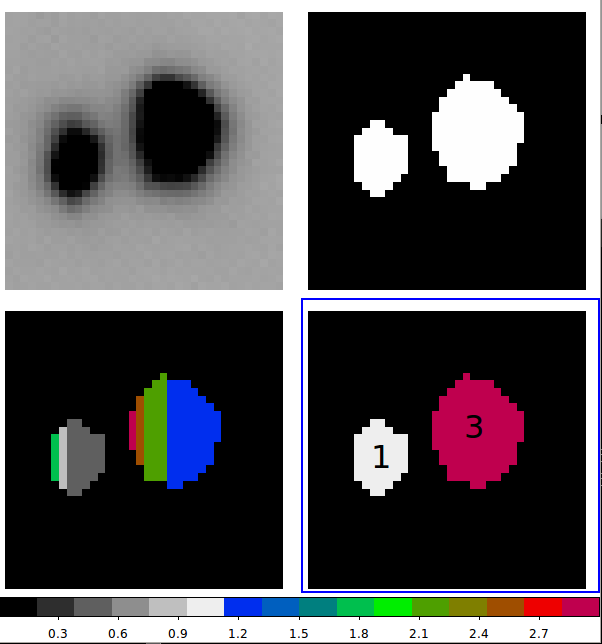ccl4
A binary image, always named "in.fits", is processed to
label all connected pixels that are 4-connected.
The run script: ccl4.sh
% ccl4.sh 1
arg1 - 1 for full image dumps, 0 for final pass2 only
In the TEST_data site for ccl4 I have built several
scripts that demonstrate how I use other codes to prepare
a good input file for ccl4. I show a run of one such script
below.
% ls
GRABIT* S/
% cat GRABIT
#!/bin/sh
# Collect a test image
#
cp $tdata/T_images/S1/hex_star2_0020.fits t1.fits
getfits -o t2.fits t1.fits 322-357 252-287
cp t2.fits in.fits
thresh.sh 3050.0 1 1.0
mv out.fits bitmap.fits
cp bitmap.fits in.fits
% GRABIT
t2.fits
Writing FITS image: out.fits
% ls
bitmap.fits GRABIT* in.fits junc runner* S/ t1.fits t2.fits
% ccl4.sh 1
Writing FITS image: pass1.fits
Writing FITS image: pass2.fits
% ls
bitmap.fits in.fits pars.in pass1.fits play1.out S/ t2.fits
GRABIT* junc pass1.equiv pass2.fits runner* t1.fits Unique_label.set
Note that if I had run ccl4 with a "0" argument then I would
have eliminated the step of writing the "pass1.fits" image.
 |
|
The result of running the script listed above. A large image
is retrieved and a small piece is cut out to make the grey-scale
image in the upper-left. The image is thresholded with the
thresh code, and this image (renamed "in.fits"
and shown in the upper-right) is fed to ccl4. The first pass of ccl4
makes a lableled pixel map (pass1, bottom-left) where the two
discrete sources are labeled, but with multiple label values per
source (the colors encode the pixel label values). In
the second pass an algorithm is used to "glue" together the
equivalent label sets and make the desired result (pass2 in
bottom-right): two sources with unique pixel labels (in this
case labels are "1" and "3").
|
Back to SCO CODES page
